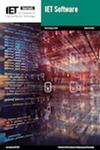钩子模型在软件产品中的应用案例研究
IF 1.3
4区 计算机科学
Q3 COMPUTER SCIENCE, SOFTWARE ENGINEERING
引用次数: 0
摘要
Hook模型用于数字产品中,通过习惯形成机制来吸引和留住用户。本文探讨了在两个移动应用程序中使用Hook模型技术,一个是流行的出租车服务(Uber出租车),另一个是社交网络(Instagram)。本文的目的是探索这两个产品中的Hook循环模式,并确定它们在应用方式上的共同点和不同点。我们的研究结果表明,Hook周期模式出现的频率相似;然而,Instagram包含了更多的内部触发器调用。优步使用较少的触发器来鼓励使用,很可能是因为用户已经对该应用程序有了特定的需求。出于同样的原因,优步在奖励发放方面失败的机会较少,而Instagram可以利用(提供奖励的)失败作为另一个触发因素,如果使用习惯已经形成。此外,我们还介绍了两种类型的Hook循环模式:内部(在单个用例中)和外部(用例之间的转换)。通过案例研究获得的见解可作为开发引人入胜和专注于留存率的应用程序的实用参考。本文章由计算机程序翻译,如有差异,请以英文原文为准。
A Case Study on Applications of the Hook Model in Software Products
The Hook model is used in digital products to engage and retain users through the mechanism of habit formation. This paper explores the use of Hook model techniques in two mobile applications, one being a popular taxi service (Uber taxi) and the other a social network (Instagram). The goal of this paper is to explore the Hook cycle patterns in the two products, and to identify commonalities and differences in how they are applied. Our results suggest that Hook cycle patterns appear with similar frequency; however, Instagram includes more internal Trigger calls. Uber uses fewer triggers to encourage usage, most probably because users already have a specific need for the application. For the same reason, Uber has less opportunity to fail in the reward delivery, while Instagram can use the failure (in providing a reward) as another trigger if the usage habit is already established. In addition, we introduce two types of Hook cycle patterns: internal (within a single use case) and external (transition between use cases). The insights obtained through the case studies serve as a practical reference for developing engaging and retention-focused applications.
求助全文
通过发布文献求助,成功后即可免费获取论文全文。
去求助
来源期刊

IET Software
工程技术-计算机:软件工程
CiteScore
4.20
自引率
0.00%
发文量
27
审稿时长
9 months
期刊介绍:
IET Software publishes papers on all aspects of the software lifecycle, including design, development, implementation and maintenance. The focus of the journal is on the methods used to develop and maintain software, and their practical application.
Authors are especially encouraged to submit papers on the following topics, although papers on all aspects of software engineering are welcome:
Software and systems requirements engineering
Formal methods, design methods, practice and experience
Software architecture, aspect and object orientation, reuse and re-engineering
Testing, verification and validation techniques
Software dependability and measurement
Human systems engineering and human-computer interaction
Knowledge engineering; expert and knowledge-based systems, intelligent agents
Information systems engineering
Application of software engineering in industry and commerce
Software engineering technology transfer
Management of software development
Theoretical aspects of software development
Machine learning
Big data and big code
Cloud computing
Current Special Issue. Call for papers:
Knowledge Discovery for Software Development - https://digital-library.theiet.org/files/IET_SEN_CFP_KDSD.pdf
Big Data Analytics for Sustainable Software Development - https://digital-library.theiet.org/files/IET_SEN_CFP_BDASSD.pdf
 求助内容:
求助内容: 应助结果提醒方式:
应助结果提醒方式:


